Can you tell us a little about yourself?
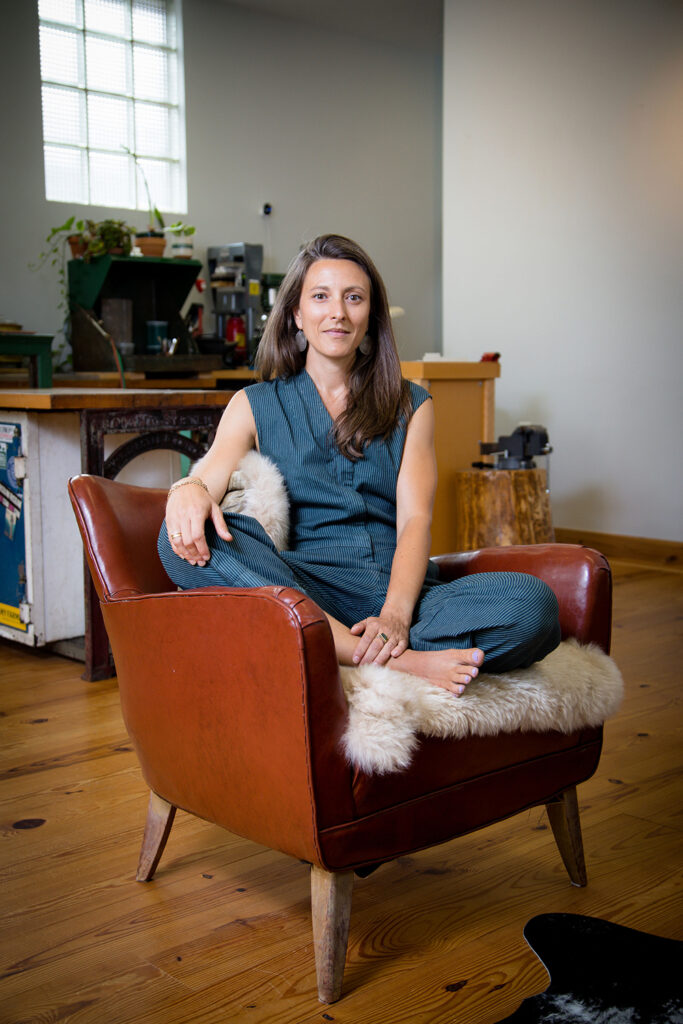
Hi! I’m Kendall Reiss (she/her). I am a Professor of the Practice at the School of the Museum of Fine Arts at Tufts University (SMFA), and currently serve as 3D Department Chair. When I’m not teaching or in the studio, I enjoy spending time learning more about the environments, both terrestrial and marine, that inspire my work.
What kind of art do you make?

My work takes a variety of forms, but most often centers around concepts related to ecology and the environment.
You studied geology before becoming an artist. How does that impact the way you approach your practice?
My undergraduate studies in geology, at Dickinson College in PA, answered many questions I had from a young age. In the field of geology, the approach is both theoretical and practical; a hands-on way of learning and interacting with the world around us. This form of engagement, coupled with the visual and tactile translation of vast epochs of time through earth-based materials (rocks, fossils, etc.), gave me foundational skills and conceptual frameworks that inform how I come to my artistic practice. These ideas flow through everything I make and form the core from which my practice unfolds.
What concepts does your art explore?
For the past four years, I have been working on a project called Being [with] Trees. This ongoing conversation with trees began through a class I taught during the pandemic called Relational Placemaking. That class prompted collaboration with a 230 year old tulip tree elder in downtown Bristol, RI. Since then, the project has expanded to address sites of artistic engagement and field research with indigenous tree-species reforestation efforts in Porto, Portugal, networks of old growth forest throughout the Southern Appalachian region of the United States, and among the pine esker forests of Punkaharju, Finland. The work takes many forms: jewelry, objects, conversations, writings, rituals, exhibits, shared understandings, community workshops; all mycelial threads that support an ongoing collaboration in which trees are participants in artistic creation and biological exchange.
Where do you make your work?
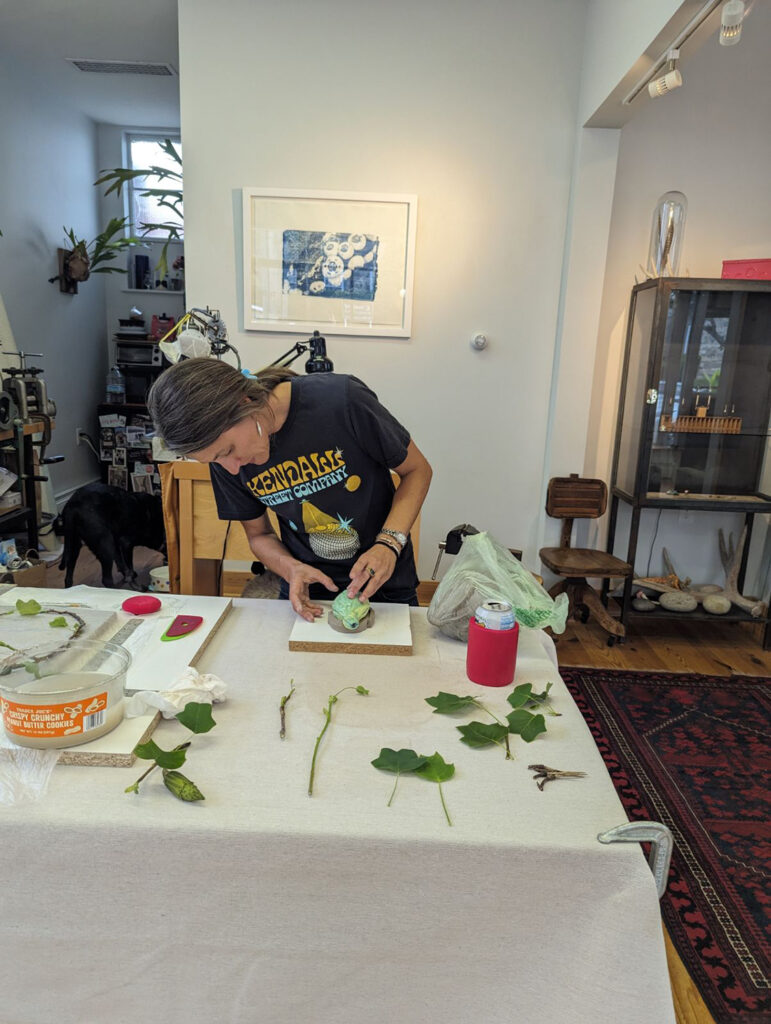
My studio is located in Bristol, Rhode Island and it is the primary place where I create most of my work. There are projects from time to time that require different equipment or facilities; I’m lucky to be able to access the fabulous Metals Studio at SMFA. The work I have been making recently requires facilities for glass working, and that has presented an opportunity to connect with generous local artists to work in their studios, and apply for residencies to support the continued development of this new element of my practice.
What are your favorite materials to use? Most unusual?
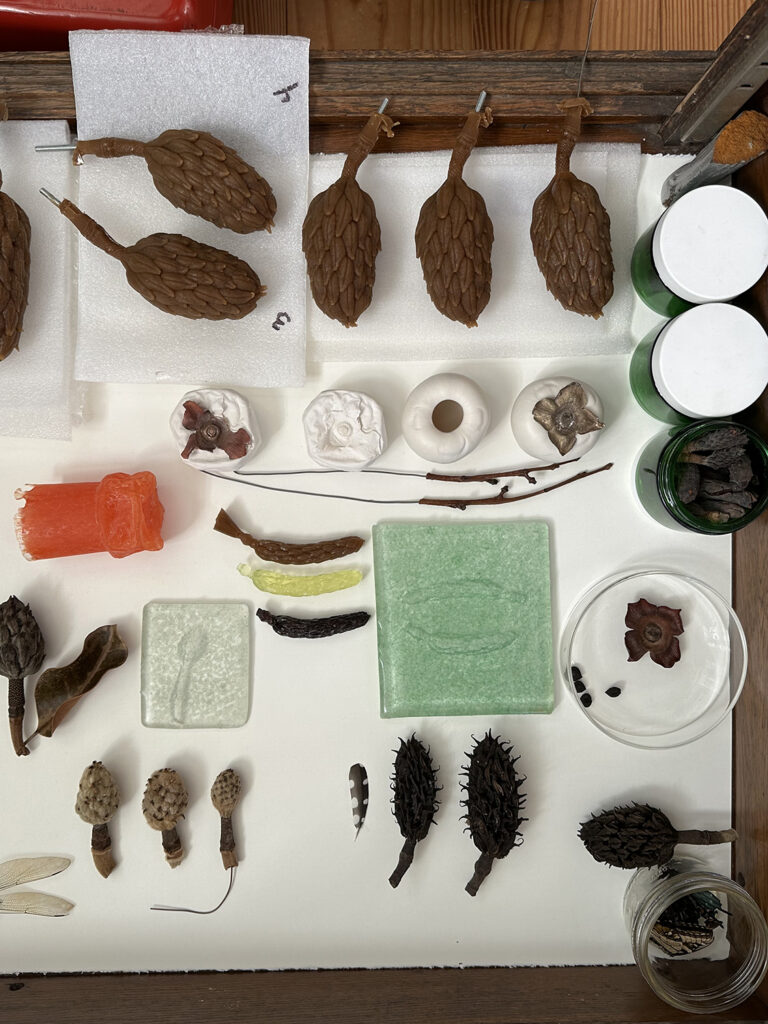
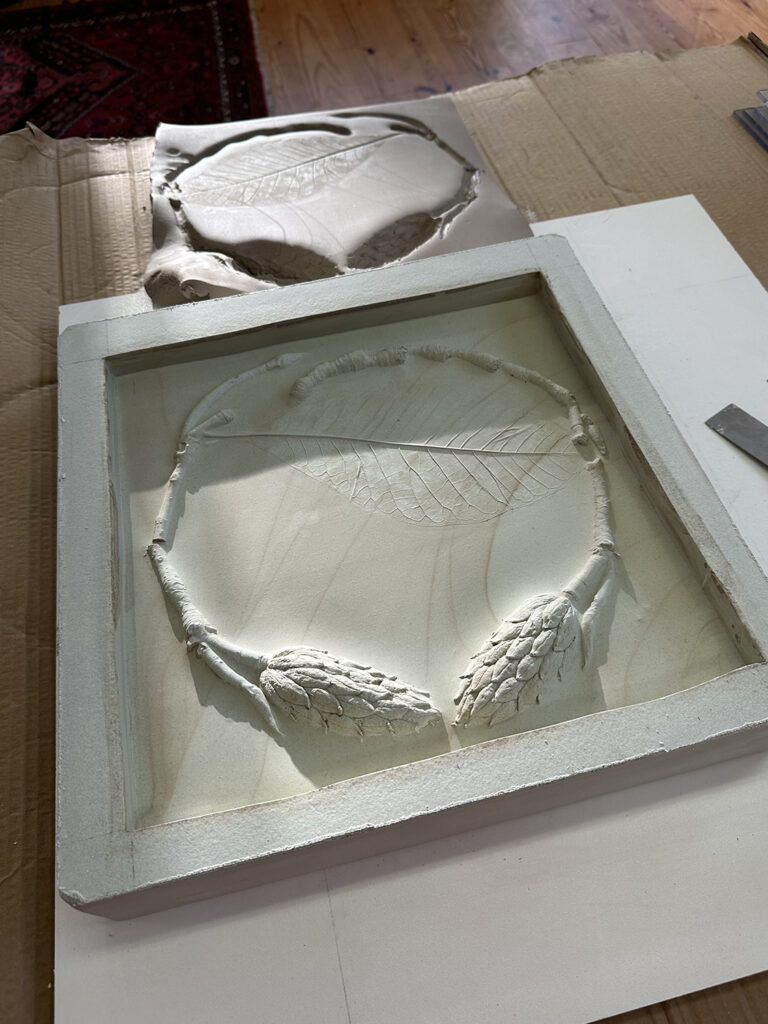
My training is situated in the fields of metalsmithing and contemporary jewelry, where materials vary greatly depending on the concept, or wearability, of the piece. Most recently however, I have been working in glass, specifically with the process of kiln casting. As a material that is new to me, glass has a direct and deep relationship with geologic time and placemaking. Glass inherently brings into question concepts of sustainability and eco-accountability. I had wanted to work with this material since grad school and finally got the opportunity to do so last summer when I took a course with Daniel Clayman at the Penland School of Craft. Some things are worth waiting for. With mold making as a primary part of my practice, I have been able to move into the glass work with some grounding and knowledge that has supported this new and exciting expansion. I look forward to continuing to learn more and expand this new body of work further.
What historical and contemporary artists inspire you?
The work that I have been researching most recently includes jewelry and glass objects by Art Nouveau artist René Lalique, as well as the Ware Collection of Blaschka Glass Models of Plants at Harvard University.
Can you tell us about the gallery you own in Bristol, Rhode Island?

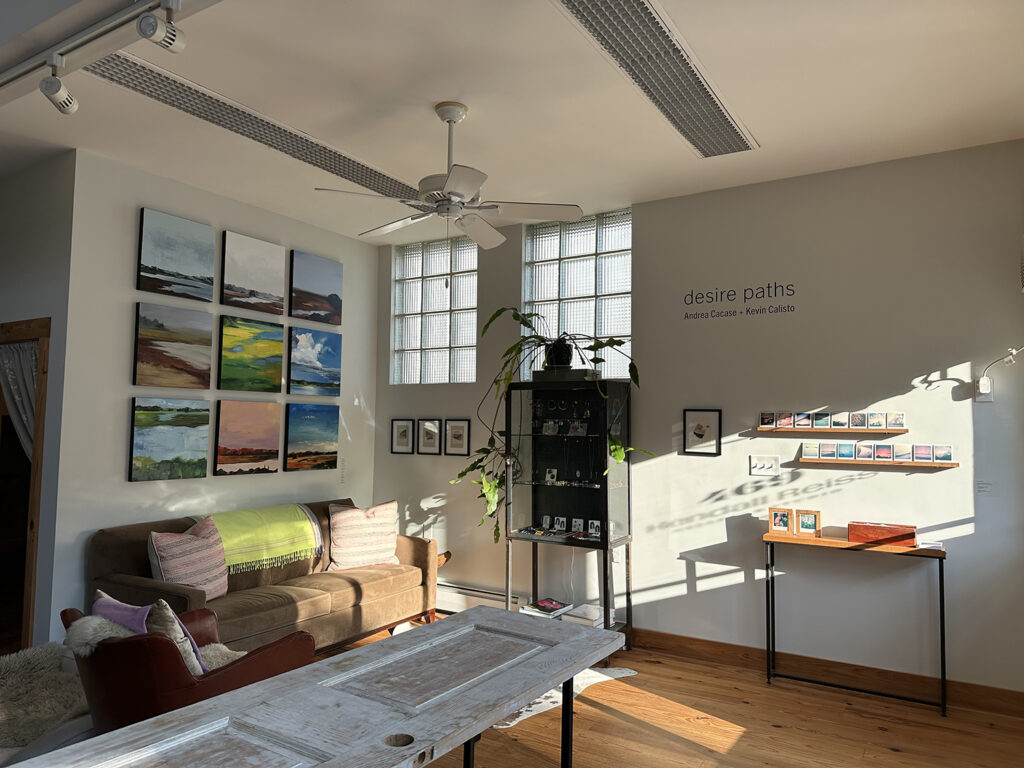
Kendall Reiss Gallery & Studio opened its doors in 2017. Since then, the space has been the site of numerous exhibitions, pop-ups, and community gatherings. The gallery seeks to showcase works from both emerging and established artists, and to serve as a platform for community engagement and support.
Congratulations on getting your work accepted into KORU8, the Finnish jewelry triennial! Can you tell us more about that?
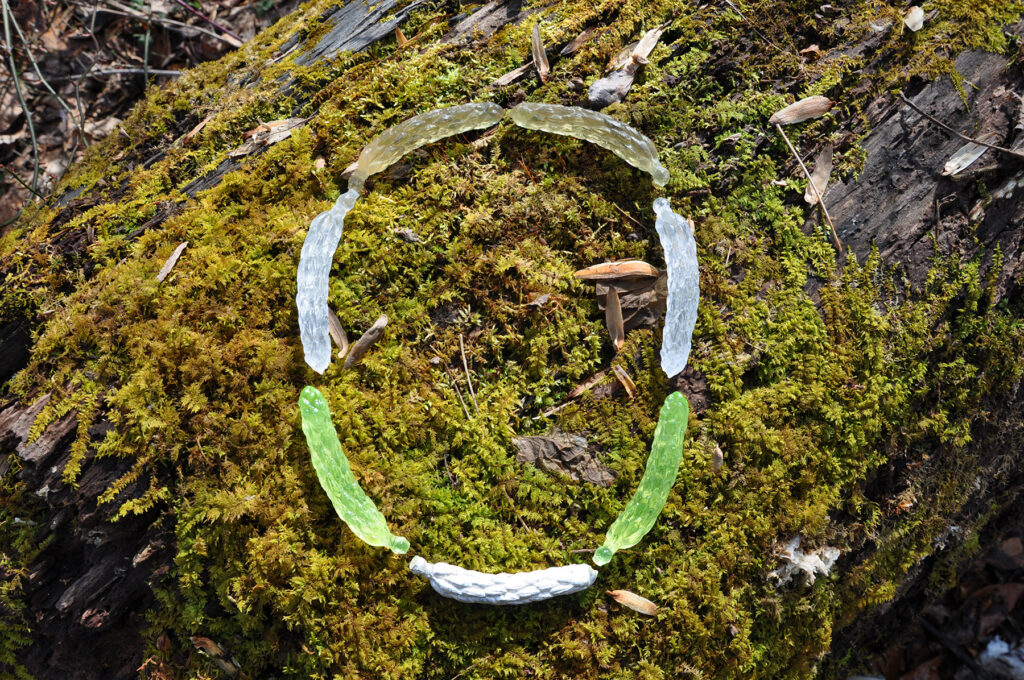
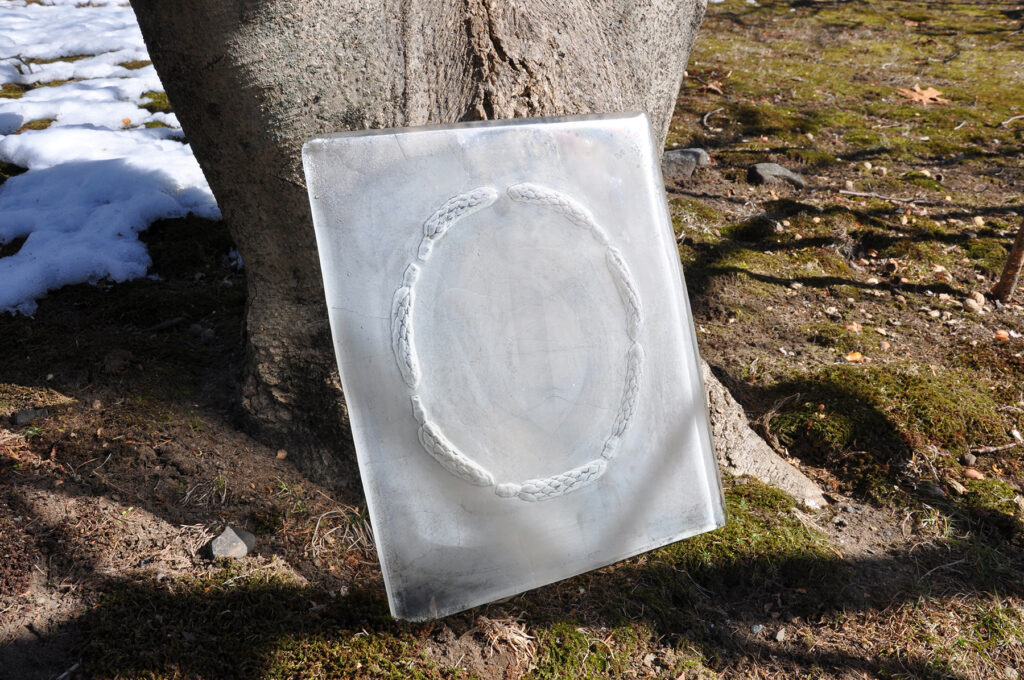
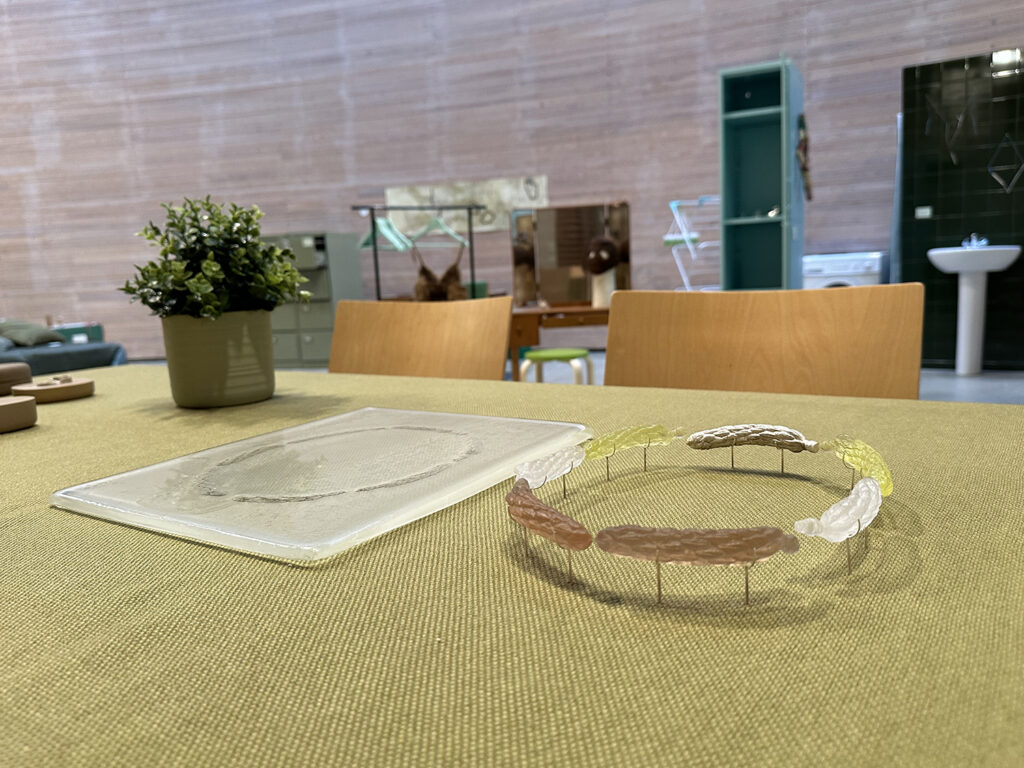
It is an absolute honor to be selected for KORU8! Thanks to funding from a Tufts Faculty Research Award, I was able to travel to Finland in June 2024 to participate in a three day wood carving workshop and two day seminar program at the LAB University of Applied Science in Lappeenranta. KORU8 is centered around the theme of forests; visiting Finland was an immersive glimpse into the deep cultural relevance of trees and forests throughout the country’s history. My piece, Objects-for-the-End-of-the-World, was co-created with magnolia elders in the range of 100-150 years old. The pair of objects integrate tree fragments; branches, leaves, and seed pods are arranged to form necklaces. Cast in glass, the final objects speak from the perspective of both fossilization and fragility. The work is currently on view at The Finnish Forest Museum Lusto in Punkaharju and will travel in January 2025 to The Oulu Art Museum.
Is there anything else you would like to share?
Thank you for your interest in my work and practice. It was a true pleasure to jury Future Craft at Gallery 263. I hope to meet you at the closing reception on November 8th from 6-8pm.